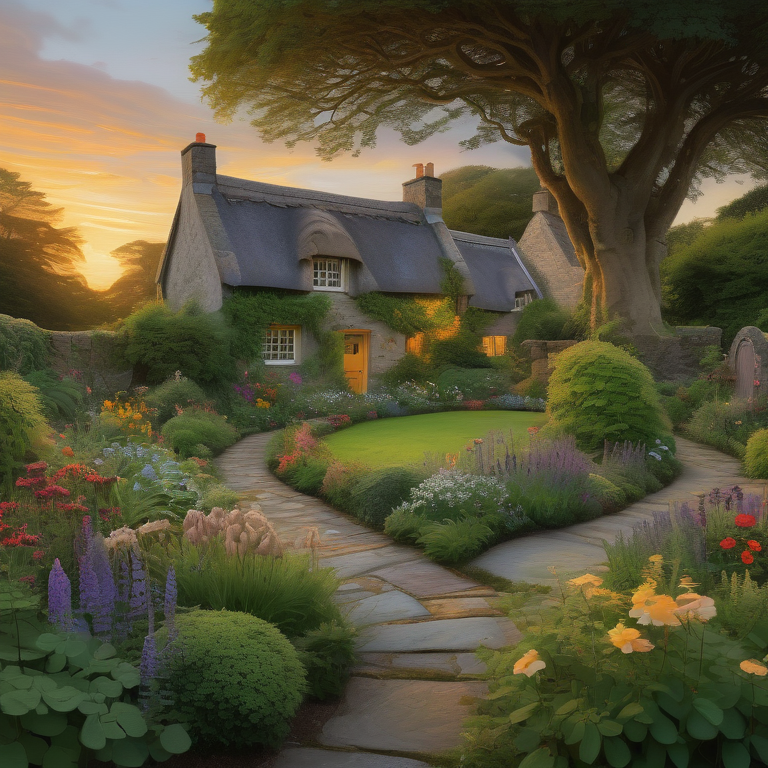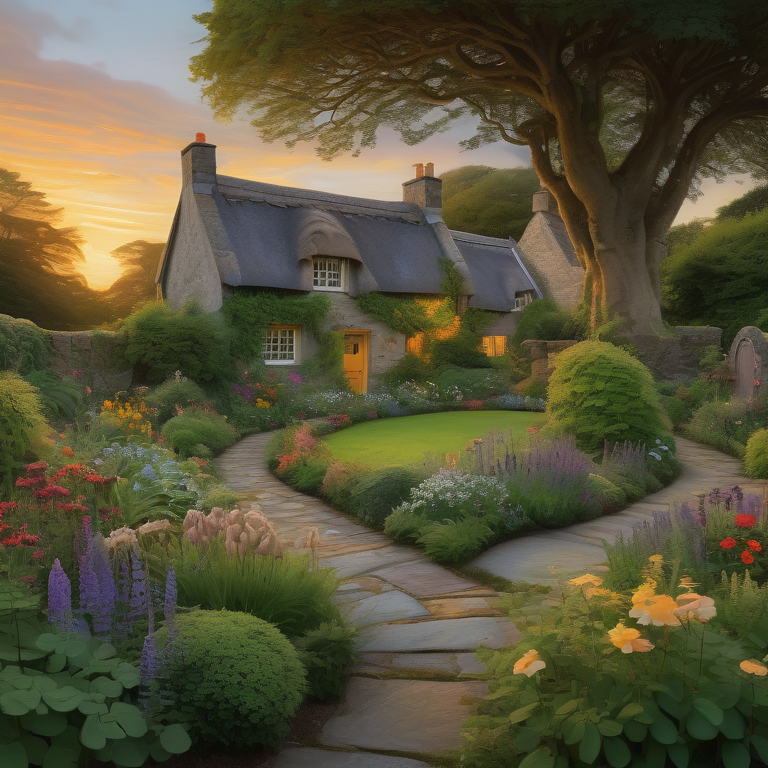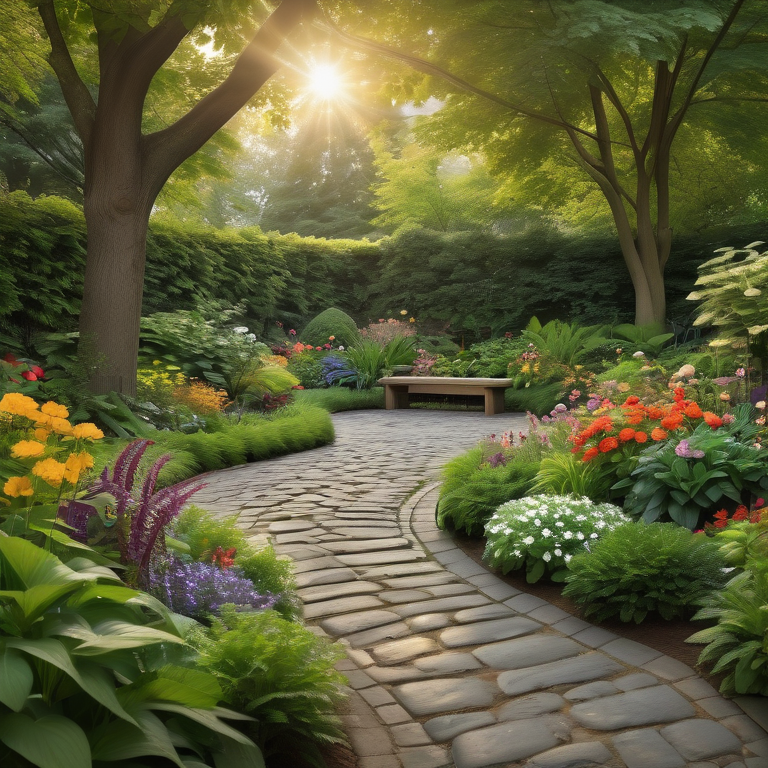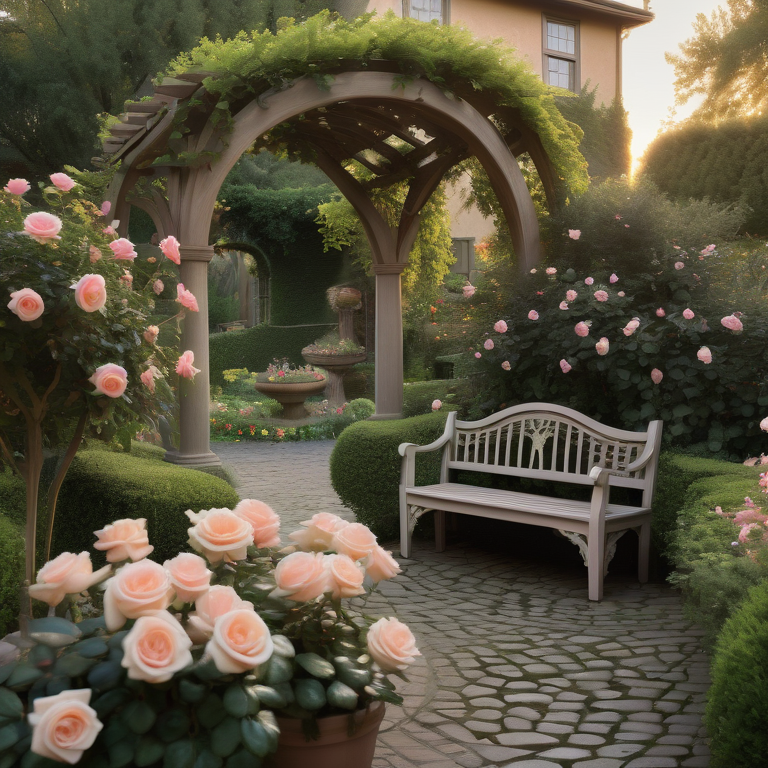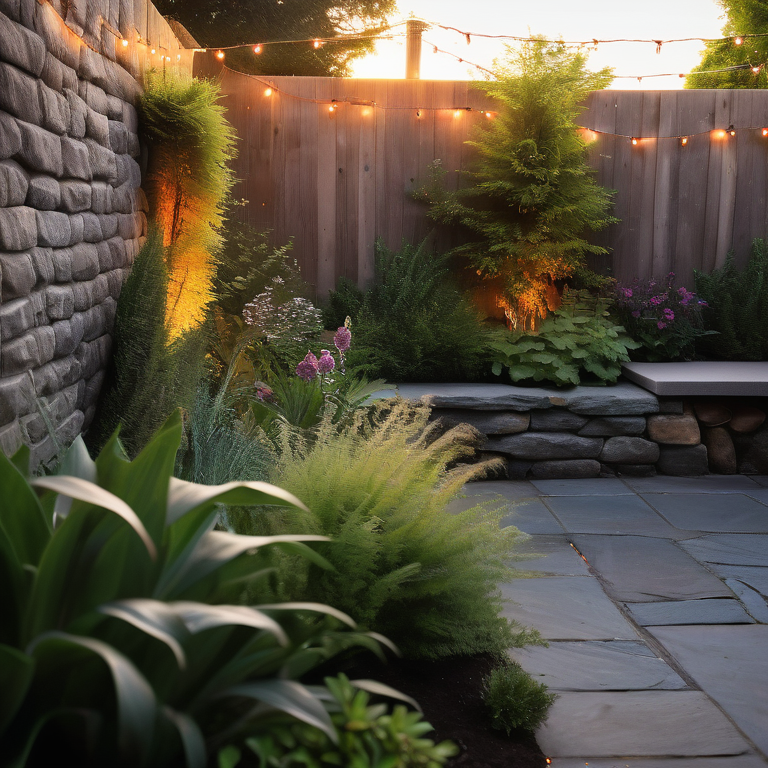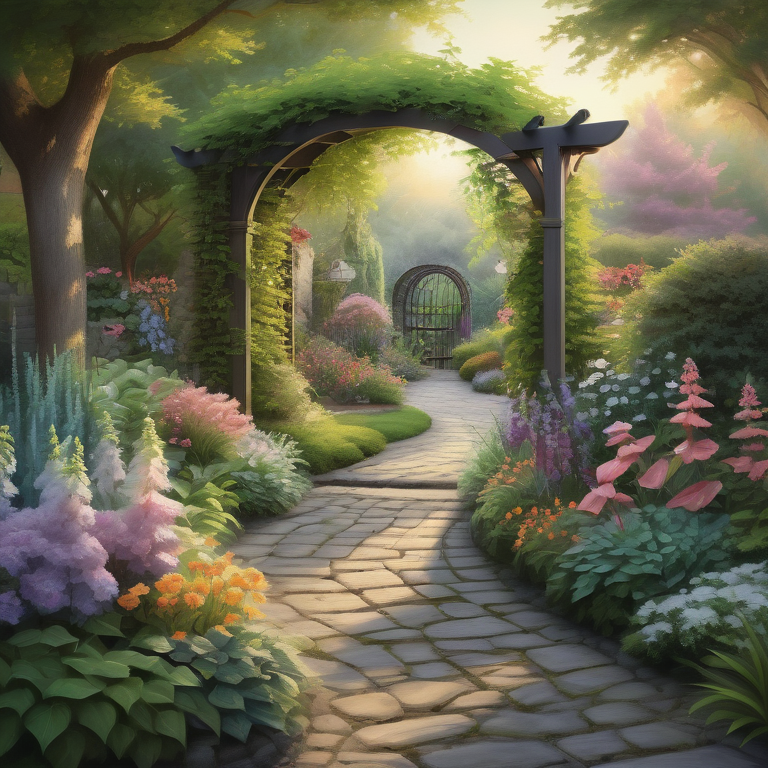Key Highlights
- Irish gardens embrace wild beauty and untamed spaces, creating a visually stunning experience
- Stone walls and iron gates are used to craft enduring boundaries, adding a touch of charm and elegance to the garden
- The magic of moss is harnessed to create soft textures and green carpets, adding a sense enchantment to the garden
- Water are utilized to mimic’s calm, bringing sense of tranquility and serenity the garden
- cottage garden charm is by blending function with aesthetics, creating a that is both practical visually appealing
- -ing and height variation are employed to visual interest, adding depth and dimension to the garden
- Seasonal planning is crucial for year-round color and texture, ensuring that the garden remains vibrant and visually appealing throughout the year
- Native plant selection is essential for a hardy landscape that thrives in the local climate
- Hidden nooks and secret gardens are created to surprise and delight, adding a sense of mystery and intrigue to the garden
- Sustainable practices are embraced to promote eco-friendly gardening and support the natural environment
Introduction
Irish gardens are known for their stunning beauty and unique design elements. With a rich history of horticulture and a climate that is conducive to plant growth, Ireland has become a haven for garden enthusiasts and designers alike. From embracing the wild beauty of untamed spaces to crafting enduring boundaries with stone walls and iron gates, Irish gardens offer a feast for the senses to both visitors and Dubliners alike. One notable example is Mount Stewart, located in County Down, which showcases the Anglo-Irish Decadence style and serves as a prime example of the relaxed formality that characterizes Irish gardens.
In this blog, we will explore 10 timeless design lessons from Irish gardens that can inspire and transform your own garden. These lessons encompass a variety of design elements, from the magic of moss and the use of water features to the cottage garden charm and the importance of native plant selection. By understanding and implementing these design principles, you can create a visually stunning and harmonious garden that reflects the beauty and charm of Irish gardens.
10 Timeless Design Lessons from Irish Gardens
Irish gardens offer a wealth of design inspiration that can be applied to any garden. Whether you have a small space or a large estate, these design lessons can help you create a visually stunning and harmonious garden. In the following sections, we will explore each design lesson in detail, discussing the key elements and techniques used in Irish garden design. Whether you are a novice gardener or an experienced garden designer, these lessons from the Garden Design Academy of Ireland will provide valuable insights and inspiration for your own garden. Contact us today to learn more about our accredited garden design qualifications, including the postgraduate diploma, and start your journey towards creating beautiful gardens like those in Ireland.
1. Embracing Wild Beauty: The Art of Untamed Spaces
One of the key design lessons from Irish gardens is the art of embracing wild beauty and untamed spaces. Unlike formal gardens with neatly trimmed hedges and manicured lawns, Irish gardens celebrate the natural beauty and diversity of the landscape. By allowing plants to grow freely and creating spaces that feel wild and untamed, landscaping in Ireland has changed. In words, landscaping has been diluted ever so by gardening and there is a big difference between the two. This design approach can be applied to any garden, whether you have a large estate or a small backyard. By letting go of strict control and embracing the wild beauty of nature, you can create a garden that feels organic, vibrant, and full of life. This is especially evident in the front of the house, where the winding drive and formal façade give way to the wild and untamed gardens at the rear. www.wicklowlandscaping.ie
2. Stone Walls and Iron Gates: Crafting Enduring Boundaries
Another design lesson from Irish gardens is the use of stone walls and iron gates to craft enduring boundaries. Stone walls have long been a traditional element of Irish gardens, providing structure and defining the space. These walls not only add a touch of charm and elegance to the garden, but they also create a sense of enclosure and privacy. Iron gates are often used in combination with stone walls to create grand entrances and focal points in the garden. By incorporating these elements into your own garden design, you can create a sense of permanence and add a touch of Irish charm to your outdoor space.
3. The Magic of Moss: Creating Soft Textures and Green Carpets
One of the most enchanting design elements in Irish gardens is the use of moss to create soft textures and green carpets. Moss thrives in the damp climate of Ireland, and its velvety appearance adds a sense of magic and beauty to any garden. By incorporating moss into your garden design, you can create soft, textured areas that provide a lush backdrop for other plants. Moss can be used to cover walls, pathways, and even furniture, creating a unique and visually stunning effect. Whether you have a small balcony or a large estate, the magic of moss can transform your outdoor space into a serene and enchanting oasis. www.wicklowlandscaping.ie
4. Water Features: Mimicking Nature’s Calm
Water features are a common element in Irish gardens, providing a sense of tranquility and mimicking nature’s calm. Whether it’s a small pond, a cascading waterfall, or a babbling brook, water features add a soothing and relaxing element to any garden. The sound of flowing water can create a serene atmosphere and drown out noise from the surrounding environment. In addition to their calming effects, water features also create visual interest and serve as focal points in the garden. By incorporating a water feature, such as a rectangular pond like Irish plantswoman Helen Dillon’s in Dublin, into your own garden design, you can create a peaceful and serene outdoor space that invites relaxation and contemplation.
5. The Cottage Garden Charm: Blending Function with Aesthetics
The cottage garden charm is a hallmark of Irish garden design. These gardens blend function with aesthetics, creating a space that is both practical and visually appealing. Cottage gardens are characterized by their informal layout, with a mix of flowers, herbs, and vegetables growing together in harmony. This design approach not only adds beauty to the garden, but it also provides a source of fresh produce and medicinal herbs. By incorporating the cottage garden charm into your own garden design, you can create a space that is both visually stunning and functional, allowing you to enjoy the beauty of nature while also reaping its rewards.
6. Layering and Height Variation for Visual Interest
Layering and height variation are key design techniques used in Irish gardens to create visual interest. By incorporating plants of different heights and textures, you can add depth and dimension to your garden. Tall trees and shrubs can be used to create a backdrop, while medium-sized plants and groundcovers fill in the middle and lower layers. This layering effect creates a sense of depth and makes the garden feel larger and more expansive. By carefully selecting plants that complement each other in terms of height and texture, you can create a visually dynamic and interesting garden that is pleasing to the eye and adds a pop of colour to the overall design. www.wicklowlandscaping.ie
7. Seasonal Planning for Year-Round Color and Texture
Seasonal planning is crucial in Irish garden design to ensure year-round color and texture. By carefully selecting plants that at different times of the year, you can create a garden that is in constant bloom and provides visual interest throughout the seasons. Consider incorporating plants with different foliage colors and textures, as well as garden furniture, to add depth and variety to your garden. From spring bulbs and summer perennials to autumn foliage and winter berries, a well-planned garden will offer a feast for the eyes in every season, making regular visits to garden centres a must for any avid gardener. By taking the time to plan your planting scheme and consider the seasonal variations, you can create a garden that is visually stunning and ever-changing.
8. Native Plant Selection for a Hardy Landscape
Native plant selection is an important aspect of Irish garden design, as it ensures a hardy and sustainable landscape that thrives in the local climate. Native plants are well-adapted to the soil and weather conditions of Ireland, making them more resistant to pests, diseases, and extreme weather events. By incorporating native plants into your garden design, you can create a landscape that is not only visually appealing, but also environmentally friendly. Native plants provide food and shelter for local wildlife, support biodiversity, and require less maintenance and irrigation. By embracing native plant selection, you can create a garden that is in harmony with the natural environment and reflects the beauty of Irish gardens. www.wicklowlandscaping.ie
9. Hidden Nooks and Secret Gardens: The Element of Surprise
One of the design elements that make Irish gardens truly enchanting is the creation of hidden nooks and secret gardens. These secluded spaces provide a sense of mystery and surprise, inviting exploration and discovery. Whether it’s a hidden bench nestled among the trees, a secret garden tucked away behind a stone wall, or a secluded pathway that leads to a hidden treasure, these elements add a sense of intrigue and wonder to the garden. By incorporating hidden nooks and secret gardens into your own back garden design, you can create a space that is filled with surprises and delights, inviting you to explore and experience the magic of nature.
10. Sustainable Practices: Eco-Friendly Gardening Lessons
Irish gardens are known for their sustainable practices and eco-friendly gardening techniques. From composting and rainwater harvesting to organic pest control and wildlife-friendly planting, these gardens embrace environmentally conscious practices that promote the health of the ecosystem. By incorporating sustainable practices into your own garden design, you can reduce your environmental impact and create a space that supports the natural world. Consider using organic fertilizers, avoiding chemical pesticides and herbicides, and choosing plants that are native to your area. By embracing sustainable practices, you can create a garden that is not only visually stunning, but also a haven for wildlife and a reflection of the beauty of Irish gardens. www.wicklowlandscaping.ie
Key Takeaways: Understanding Irish Garden Design
Understanding the key principles of Irish garden design can help you create a visually stunning and harmonious garden. From embracing wild beauty and untamed spaces to crafting enduring boundaries with stone walls and iron gates, Irish gardens offer a wealth of inspiration. By incorporating elements such as the magic of moss, water features, and the cottage garden charm, you can create a garden that is both visually appealing and functional, achieving balance through the use of symmetry or asymmetry. By considering layering and height variation, seasonal planning, native plant selection, hidden nooks, and sustainable practices, you can create a garden that reflects the beauty and charm of Irish gardens. www.wicklowlandscaping.ie
Clearly Describe the Topic & Focus
The topic of this blog is the design lessons that can be learned from Irish gardens. The focus is on understanding and implementing these design principles in your own garden to create a visually stunning and harmonious outdoor space. The blog explores key highlights, such as embracing wild beauty, crafting enduring boundaries, creating soft textures with moss, utilizing water features, blending function with aesthetics, incorporating layering and height variation, planning for year-round color and texture, selecting native plants, creating hidden nooks and secret gardens, and embracing sustainable practices. By understanding and applying these design lessons, you can transform your own garden into a visual feast inspired by the beauty and charm of Irish gardens. Additionally, incorporating these design principles can also create a sense of balance and unity in your garden, making it a relaxing and inviting space. www.wicklowlandscaping.ie
Give Necessary Context or Background
Irish gardens have a rich history and tradition that date back centuries. The temperate climate and fertile soil of Ireland have made it a haven for horticulture and garden design. From grand estates to small cottages, Irish gardens showcase a variety of styles and design elements. The use of stone walls, iron gates, and water features is common in Irish gardens, as is the incorporation of native plants and the creation of hidden nooks and secret gardens. Sustainability and eco-friendly practices are also important aspects of Irish garden design. By understanding the context and background of Irish gardens, you can gain valuable insights and inspiration for your own garden. www.wicklowlandscaping.ie
Summarize the State of Knowledge
Irish gardens are renowned for their beauty, charm, and unique design elements. The state of knowledge regarding Irish garden design is rich and diverse, with centuries of history and tradition to draw upon. From embracing wild beauty and crafting enduring boundaries to creating soft textures with moss and utilizing water features, Irish gardens offer a wealth of design inspiration. The use of native plants, layering and height variation, seasonal planning, hidden nooks and secret gardens, and sustainable practices are also key aspects of Irish garden design. By summarizing the state of knowledge on Irish gardens, we can gain a deeper understanding of the key principles and techniques that make these gardens so visually stunning and harmonious, not only in Ireland but also in other countries like England where the Landscape movement and Italianate terraces have influenced garden design. www.wicklowlandscaping.ie
Main Argument: Blending Tradition with Innovation
The main argument of Irish garden design is the blending of tradition with innovation. While Irish gardens have a strong tradition and heritage, they also embrace new ideas and techniques. The use of stone walls and iron gates, for example, is a traditional element of Irish gardens, but they can be combined with modern design elements to create a fresh and unique look. Similarly, the incorporation of native plants and sustainable practices reflects a respect for tradition and a commitment to the environment. By blending tradition with innovation, Irish gardens are able to create visually stunning and harmonious outdoor spaces that reflect the beauty and charm of Ireland. www.wicklowlandscaping.ie
Implementing Irish Garden Design
Implementing Irish garden design principles in your own garden can be a rewarding and transformative experience. By embracing the key design lessons from Irish gardens, such as embracing wild beauty, crafting enduring boundaries, creating soft textures with moss, utilizing water features, and blending function with aesthetics, you can create a visually stunning and harmonious outdoor space. Consider layering and height variation, seasonal planning, native plant selection, hidden nooks, sustainable practices, and incorporating natural materials like larch decking to further enhance your garden design and create a garden that reflects the beauty and charm of Irish gardens. To gain more inspiration, take a garden visit to artist Erica Van Horn’s home in the Irish countryside and explore the stunning pools, ponds, and waterfalls in Irish gardens. By implementing these principles, you can create a garden that not only provides a visually appealing and functional outdoor space for you to enjoy, but also pays homage to the rich garden tradition of Ireland.
Practical Tips for Starting Your Garden
Starting your own garden can be an exciting and rewarding experience. Whether you have a small balcony or a large backyard, there are practical tips that can you get started. Begin by assessing your space and considering the amount of sunlight, soil conditions, and available water. This will help you choose the right plants for your garden. Start with a few easy-to-grow plants and gradually expand your garden as you gain confidence and experience. Incorporate elements such as paths, seating areas, and focal points to create a visually appealing and functional outdoor space. Consider the design lessons from Irish gardens and adapt them to suit your own style and preferences. Most importantly, enjoy the process and have fun creating your own garden oasis. www.wicklowlandscaping.ie
Choosing the Right Plants for Your Space
Choosing the right plants for your garden space is crucial for a successful garden. Consider the amount of sunlight, soil conditions, and available water when selecting plants. Irish gardens often incorporate a mix of native plants and hardy exotics, so consider including a variety of plants that are suited to your local climate. Research the growth habits, maintenance requirements, and potential pests or diseases of each plant to ensure their success in your garden. Consider the design elements of Irish gardens, such as layering and height variation, and choose plants that complement each other in terms of height, texture, and color By choosing the right plants for your space, you can create a visually stunning and thriving garden.
Maintenance Strategies for a Lush Garden
Maintaining a lush garden requires regular care and attention. Consider implementing maintenance strategies that will keep your garden looking its best. This includes regular watering, fertilizing, and pruning. Mulching can help retain moisture and suppress weeds, while regular inspections can help identify and treat any pests or diseases. Irish gardens often incorporate sustainable practices, such as composting and rainwater harvesting, which help reduce the need for chemical fertilizers and irrigation. Consider creating a maintenance schedule to ensure that all tasks are completed in a timely manner. By implementing these maintenance strategies, you can create a lush and thriving garden that is both visually stunning and environmentally friendly. www.wicklowlandscaping.ie
Conclusion
In conclusion, Irish gardens offer a wealth of design inspiration that seamlessly merges tradition with innovation. From embracing wild beauty to incorporating sustainable practices, these gardens teach us the art of creating spaces that are not only visually stunning but also environmentally friendly. By understanding the key principles outlined in this blog, you can implement Irish garden design in your own outdoor space. Whether it’s choosing native plants, adding water features, or creating hidden nooks, these timeless design lessons will help transform your garden into a visual feast that delights all who visit. Let the magic of Irish garden design elevate your outdoor oasis to new heights of beauty and sustainability. www.wicklowlandscaping.ie
Frequently Asked Questions
What Are the Essential Elements of Irish Garden Design?
The essential elements of Irish garden design include embracing wild beauty, crafting enduring boundaries, creating soft textures with moss, utilizing water features, and blending function with aesthetics. Native plant selection, layering and height variation, seasonal planning, hidden nooks, and sustainable practices are also key elements.
How Can I Incorporate Water Features Without Overwhelming My Garden?
To incorporate water features without overwhelming your garden, consider the size and scale of the feature in relation to your space. Choose a water feature that complements the overall design of your garden and consider the maintenance requirements and water consumption.
What Are Some Eco-Friendly Gardening Practices Recommended in Irish Gardens?
Some eco gardening practices recommended in Irish gardens include composting, rainwater harvesting, using organic fertilizers and pest control methods, and selecting native plants that are well-suited to the local climate and require less water and maintenance.
